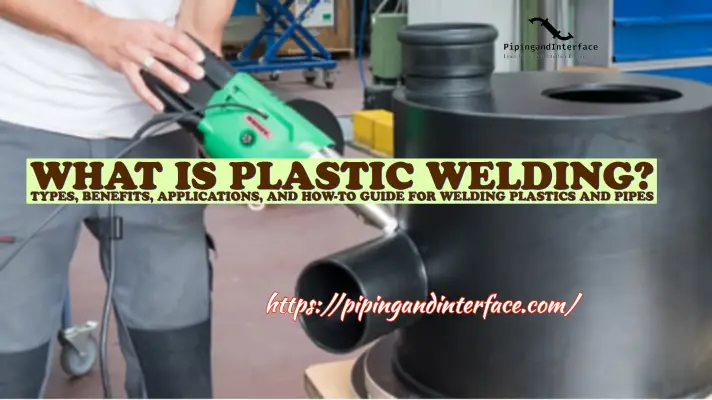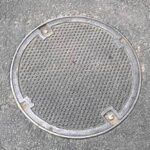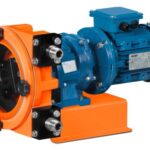ASME stamps are widely recognized symbols that indicate compliance with specific codes and standards for various pressure equipment and systems. These stamps are crucial in ensuring the safety, quality, and integrity of pressure vessels, boilers, and related components. This comprehensive guide will cover the key ASME stamps and their significance.
ASME Boiler and Pressure Vessel Code (BPVC):
The ASME BPVC is a comprehensive set of codes and standards that govern the design, construction, inspection, and testing of boilers, pressure vessels, and their related components. Within this overarching code, there are various stamps that signify compliance with different sections of the BPVC. These stamps play a vital role in ensuring the safety and quality of pressure equipment. Let’s delve into the most commonly used ASME stamps:
List of ASME Stamps
The following ASME Stamps are most widely used in industries:
ASME Stamps for Section I: Power Boilers
- S – Power Boilers
- A – Assembly of Power Boilers
- E – Electric Boilers
- M – Miniature Boiler
- PP – Pressure Piping
- PRT – Parts Fabrication
ASME Stamps for Section IV: Heating Boilers
- H – Heating Boilers/Cast Iron Sectional Heating Boiler
- HLW – Lined Potable Water Heaters
- PRT – Parts Fabrication
ASME Stamps for Section VIII Division 1: Pressure Vessels
- U – Pressure Vessels
- UM – Miniature Pressure Vessels
- PRT – Parts Fabrication
ASME Stamps for Section VIII Division 2: Pressure Vessels
- U2 – Pressure Vessels (Alternative Rules for Pressure Vessels)
ASME Stamps for Section VIII Division 3: Pressure Vessels
- U3 – High Pressure Vessels
ASME Stamps for Section X: Reinforced Plastic Vessels
- RP – Fiber-reinforced plastic Vessels
ASME Stamps for Section XII: Transports Tank
- T – Transport Tanks
- PRT – Parts Fabrication
ASME Stamps for Section XIII: Pressure Relief Devices
- V – Boiler Pressure Relief Valves
- HV – Heating Boiler Safety Valves
- UV – Pressure Vessel Pressure Relief Valves
- UD – Pressure Vessel Pressure Relief Devices
- UV3 – High-Pressure Vessel Pressure Relief Valves
- UD3 – High-Pressure Vessel Pressure Relief Devices
- TV – Transport Tanks Pressure Relief Valves
- TD – Transport Tanks Pressure Relief Devices
ASME Stamps for Nuclear Industries
- N-Nuclear Components
- NPT-Nuclear Partials
- NA-Nuclear Installation and Shop Assembly
- NV-Nuclear Safety and Safety Relief Valves
- N3-Storage and Transport Containment of Nuclear Fuel
Let’s understand some of these ASME stamps in brief.

ASME Section I – Power Boilers Stamp (S Stamp):
The ASME Section I stamp, often referred to as the “S Stamp,” is used to certify the design, fabrication, and construction of power boilers. Power boilers are boilers used in industrial processes and power generation, typically operating at high pressures and temperatures. To obtain the S Stamp, manufacturers must adhere to strict guidelines outlined in Section I of the BPVC, ensuring that boilers are constructed in a safe and reliable manner.
Key Requirements for Obtaining the S Stamp:
- Compliance with ASME Section I requirements.
- Extensive documentation and design calculations.
- Thorough material testing and inspections.
- Qualified welding procedures and welder performance qualifications.
- Pressure testing and non-destructive examination (NDE) of welds and components.
- Submission of a Manufacturer’s Data Report (MDR) to the National Board.
ASME Section IV – Heating Boilers Stamp (H Stamp):
The ASME Section IV stamp, or “H Stamp,” pertains to heating boilers used for residential and commercial heating applications. These boilers typically operate at lower pressures and temperatures compared to power boilers. Compliance with ASME Section IV ensures the safety and efficiency of heating boilers.
Key Requirements for Obtaining the H Stamp:
- Adherence to ASME Section IV requirements.
- Design considerations for thermal efficiency.
- Material specifications and testing.
- Welding procedures and inspections.
- Pressure testing and NDE as required.
- MDR submission to the National Board.
ASME Section VIII – Pressure Vessel Stamps (U, UM, and UV Stamps):
ASME Section VIII of the BPVC addresses the design and construction of pressure vessels. Three common stamps associated with Section VIII include the U Stamp, UM Stamp, and UV Stamp, each signifying different aspects of pressure vessel manufacturing and certification.
a. U Stamp:
The U Stamp is used to certify pressure vessels designed for general applications. To obtain the ASME U Stamp, manufacturers must meet stringent design, fabrication, inspection, and testing requirements outlined in ASME Section VIII, Division 1.
Key Requirements for Obtaining the U Stamp:
- Full compliance with ASME Section VIII, Division 1 requirements.
- Detailed design calculations and documentation.
- Material testing and certification.
- Rigorous welding procedures and qualifications.
- Extensive pressure testing and NDE.
- Submission of a U-1 Data Report to the National Board.
b. UM Stamp:
The UM Stamp is a special endorsement that allows manufacturers to design and fabricate pressure vessels using their own design code or standard, provided it is equivalent to or more stringent than ASME Section VIII, Division 1. The UM Stamp is often sought by manufacturers who have unique design methodologies.
Key Requirements for Obtaining the UM Stamp:
- Demonstrating equivalency or superiority to ASME Section VIII, Division 1.
- Detailed documentation of the alternative design code.
- Material testing, welding procedures, and NDE in compliance with the chosen code.
- Submission of a UM Data Report to the National Board.
c. UV Stamp:
The UV Stamp is used for pressure vessels designed for specific applications involving the transportation of compressed gases. It certifies that the pressure vessel meets the requirements outlined in ASME Section VIII, Division 2, which is specifically tailored for high-pressure containers.
Key Requirements for Obtaining the UV Stamp:
- Compliance with ASME Section VIII, Division 2 requirements.
- Documentation of design, materials, and manufacturing processes.
- Extensive testing and inspections, including fatigue analysis.
- Submittal of a UV Data Report to the National Board.
ASME N and NA Stamps – Nuclear Components:
For nuclear components and systems, ASME offers the N and NA stamps, which are essential for ensuring the safety and quality of equipment used in nuclear power plants and related facilities.
a. ASME N Stamp:
The ASME N Stamp is used for the design and construction of nuclear pressure vessels. It signifies compliance with the ASME Boiler and Pressure Vessel Code, Section III, Division 1, which addresses the requirements for nuclear components.
Key Requirements for Obtaining the N Stamp:
- Adherence to ASME Section III, Division 1 requirements.
- Detailed design documentation.
- Material qualification and testing.
- Rigorous welding procedures and inspections.
- Extensive NDE and testing.
- Submission of an N-1 Data Report to the National Board.
b. ASME NA Stamp:
The ASME NA Stamp is specific to the design and construction of nuclear Class 1, 2, and 3 components. These components have different safety classifications, with Class 1 being the most safety-critical. The NA Stamp signifies compliance with ASME NCA-4000, which outlines requirements for nuclear Class 1, 2, and 3 components.
Key Requirements for Obtaining the NA Stamp:
- Adherence to ASME NCA-4000 requirements.
- Detailed design documentation specific to nuclear Class 1, 2, or 3 components.
- Material qualification and testing.
- Welding procedures and inspections.
- NDE and testing in compliance with the safety classification.
- Submission of an NA-1 Data Report to the National Board.
ASME Certification Mark (M Stamp):
The ASME Certification Mark, or “M Stamp,” is used for manufacturers of materials. This stamp signifies that a manufacturer’s materials meet ASME standards and specifications. Manufacturers seeking the M Stamp must undergo a rigorous certification process to ensure the quality and consistency of their materials.
Key Requirements for Obtaining the M Stamp:
- Compliance with ASME material specifications and standards.
- Thorough material testing and quality control processes.
- Regular audits and inspections by ASME representatives.
Conclusion:
ASME stamps are vital indicators of compliance with specific codes and standards that ensure the safety and quality of pressure equipment, boilers, piping systems, and nuclear components. Each ASME stamp serves a distinct purpose, reflecting adherence to the relevant sections of the ASME Boiler and Pressure Vessel Code or other ASME codes. Understanding these stamps and their associated requirements is crucial for manufacturers, engineers, and inspectors involved in the design, fabrication, and maintenance of pressure equipment and systems. ASME’s commitment to safety and quality is underscored by the rigorous processes and standards upheld by those who hold these stamps, making them a cornerstone of the industry’s dedication to excellence and safety.






